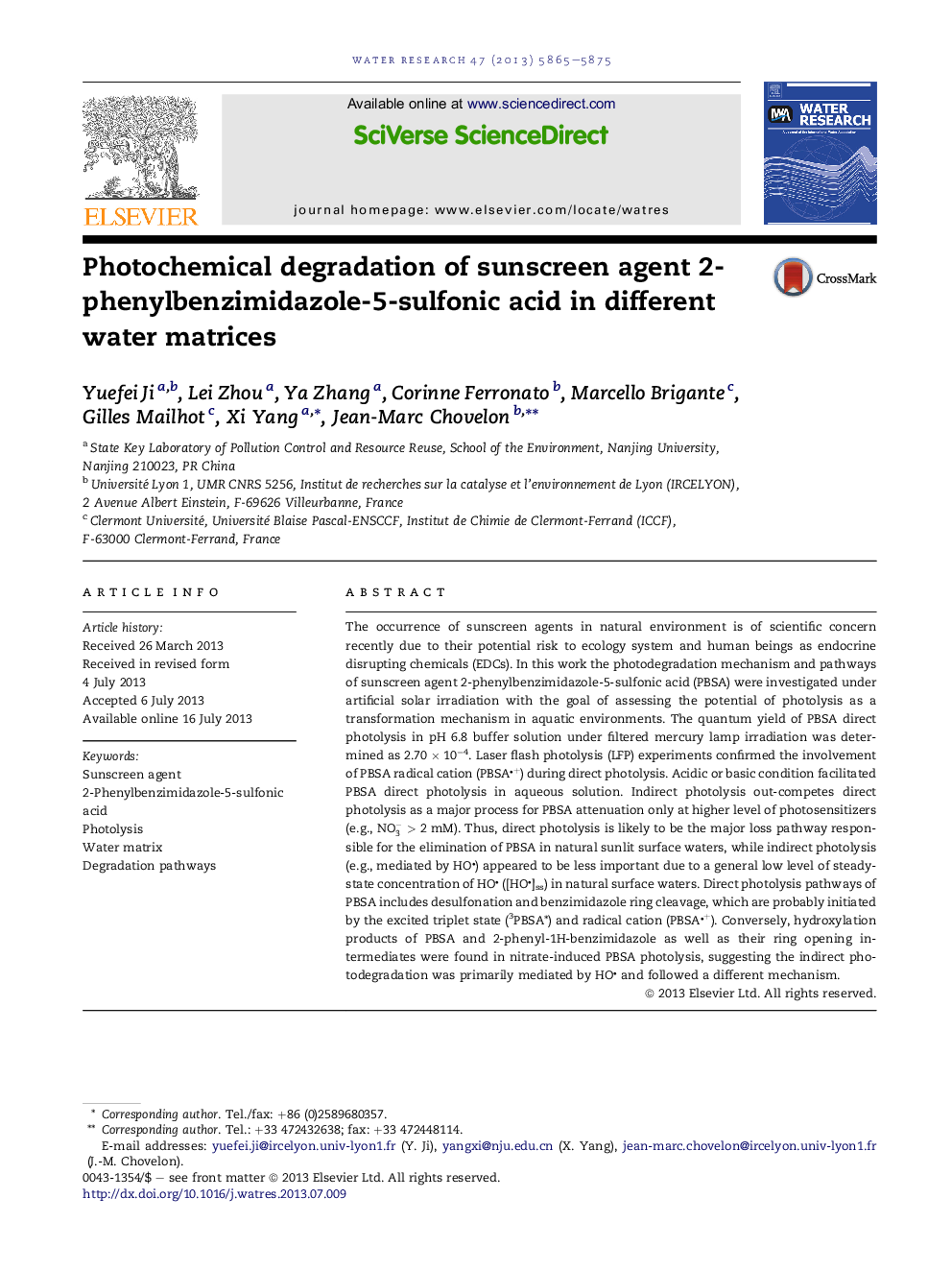| کد مقاله | کد نشریه | سال انتشار | مقاله انگلیسی | نسخه تمام متن |
|---|---|---|---|---|
| 6367522 | 1316842 | 2013 | 11 صفحه PDF | دانلود رایگان |

- Photolysis of 2-phenylbenzimidazole-5-sulfonic acid in different water matrices.
- Excited state and radical cation of PBSA are involved in photolysis process.
- Direct photolysis is the major loss pathway of PBSA in aqueous solution.
- Hydroxyl radical plays a key role in indirect photolysis of PBSA.
- Photodegradation pathways include desulfonation and ring cleavage.
The occurrence of sunscreen agents in natural environment is of scientific concern recently due to their potential risk to ecology system and human beings as endocrine disrupting chemicals (EDCs). In this work the photodegradation mechanism and pathways of sunscreen agent 2-phenylbenzimidazole-5-sulfonic acid (PBSA) were investigated under artificial solar irradiation with the goal of assessing the potential of photolysis as a transformation mechanism in aquatic environments. The quantum yield of PBSA direct photolysis in pH 6.8 buffer solution under filtered mercury lamp irradiation was determined as 2.70 Ã 10â4. Laser flash photolysis (LFP) experiments confirmed the involvement of PBSA radical cation (PBSA+) during direct photolysis. Acidic or basic condition facilitated PBSA direct photolysis in aqueous solution. Indirect photolysis out-competes direct photolysis as a major process for PBSA attenuation only at higher level of photosensitizers (e.g., NO3â > 2 mM). Thus, direct photolysis is likely to be the major loss pathway responsible for the elimination of PBSA in natural sunlit surface waters, while indirect photolysis (e.g., mediated by HO) appeared to be less important due to a general low level of steady-state concentration of HO ([HO]ss) in natural surface waters. Direct photolysis pathways of PBSA includes desulfonation and benzimidazole ring cleavage, which are probably initiated by the excited triplet state (3PBSAâ) and radical cation (PBSA+). Conversely, hydroxylation products of PBSA and 2-phenyl-1H-benzimidazole as well as their ring opening intermediates were found in nitrate-induced PBSA photolysis, suggesting the indirect photodegradation was primarily mediated by HO and followed a different mechanism.
93
Journal: Water Research - Volume 47, Issue 15, 1 October 2013, Pages 5865-5875